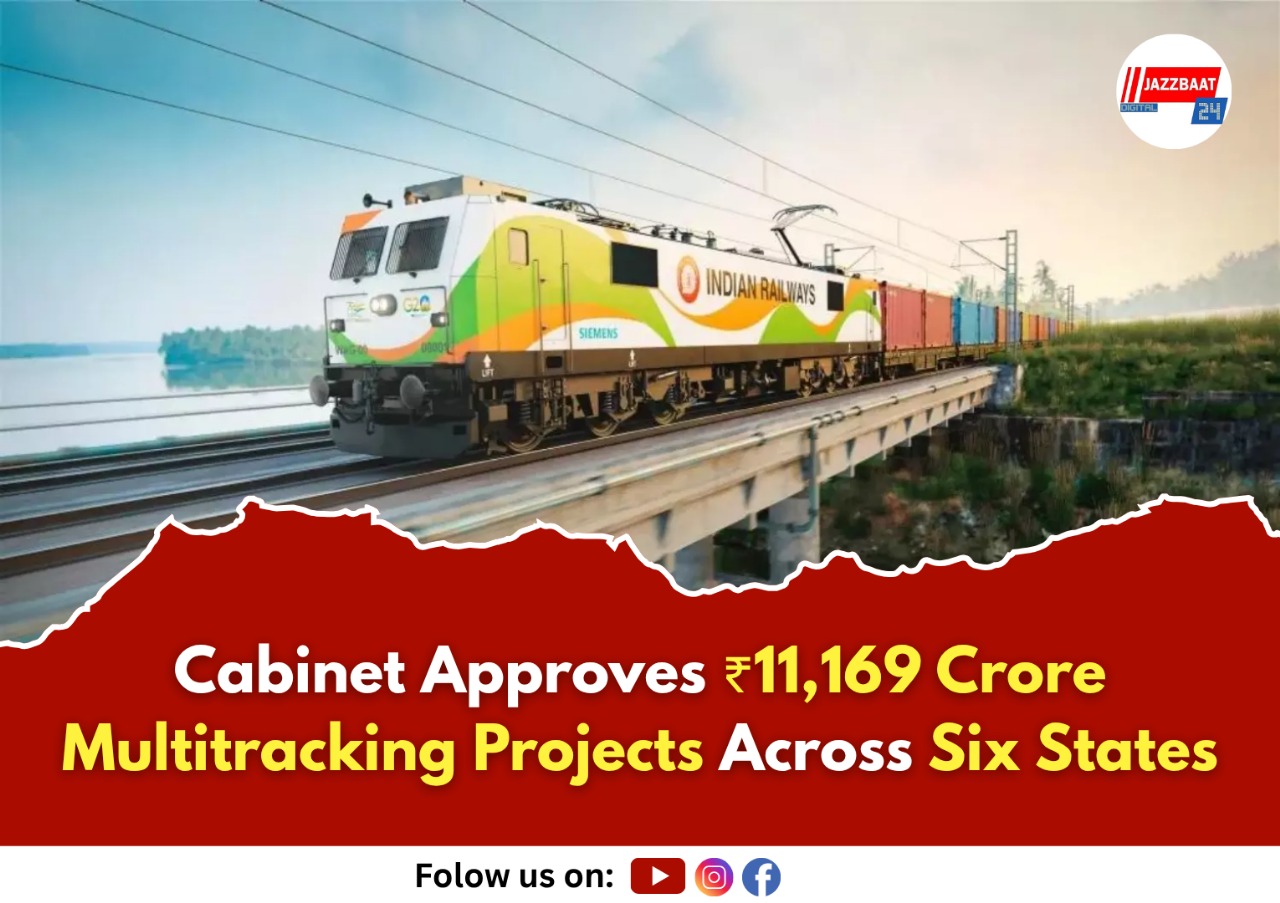
Dipanjan Mondal
New Delhi: The Cabinet Committee on Economic Affairs (CCEA), led by Prime Minister Narendra Modi, has approved four major railway multitracking projects. These projects will add around 574 kilometres to the Indian Railways network. They will cover 13 districts in Maharashtra, Madhya Pradesh, West Bengal, Bihar, Odisha, and Jharkhand. The total estimated cost is ₹11,169 crore, and they are set to be completed by 2028–29.
According to the railway ministry, the approved projects include the Itarsi–Nagpur four-line expansion, the doubling of the Chhatrapati Sambhajinagar–Parbhani section, and the addition of third and fourth lines between Aluabari Road and New Jalpaiguri, as well as between Dangoaposi and Jaroli. These improvements aim to reduce congestion, boost mobility, and enhance the efficiency and reliability of railway services.
Officials mentioned that these projects support the Prime Minister’s Gati Shakti National Master Plan, which focuses on improving multi-modal logistics. The development is expected to benefit about 2,309 villages, home to over 43.6 lakh people. It will also generate approximately 229 lakh human-days of employment during the construction phase, which will significantly support local economies.
The new lines will be crucial for transporting bulk commodities like coal, cement, fly ash, gypsum, petroleum products, containers, and agricultural goods. The railway ministry estimates that these projects will add an extra freight capacity of 95.91 million tonnes per year. Given that railways are an energy-efficient and eco-friendly transport option, this increased capacity should also help India in meeting its climate goals. The ministry anticipates that these projects will reduce oil imports by 16 crore litres and lower carbon dioxide emissions by about 515 crore kilograms, which is equivalent to planting 20 crore trees.
The government described this decision as part of its commitment to building a self-reliant India, or 'Atmanirbhar Bharat,' and stated that improved connectivity will lead to broader regional development and better economic opportunities in the affected areas.